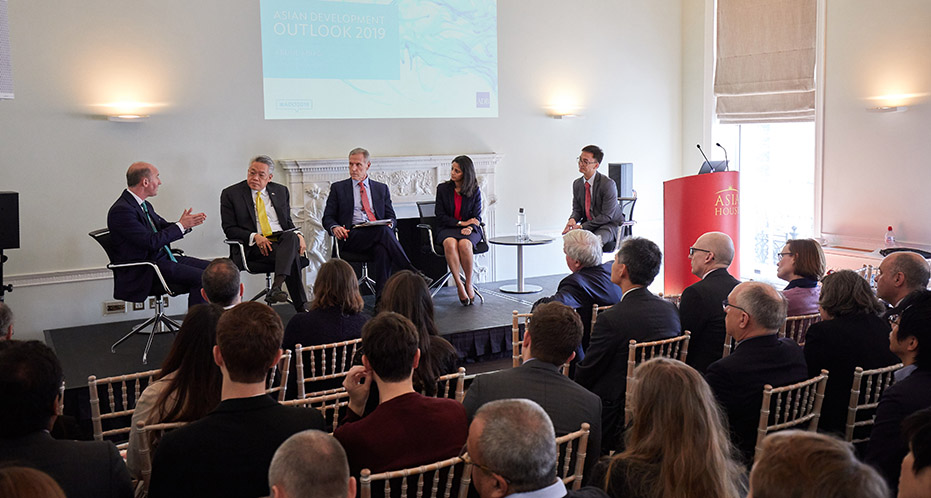Driving commercial and political engagement between Asia, the Middle East and Europe
Driving commercial and political engagement between Asia, the Middle East and Europe
Driving commercial and political engagement between Asia, the Middle East and Europe

ASEAN integration will be accelerated under Thailand’s chairmanship in order to counter the “tough challenge” of the US-China trade war, His Excellency Pisanu Suvanajata, Thailand’s Ambassador to the UK, told an Asia House audience of business and policy figures.
Taking part in a panel discussion during the launch of the Asian Development Bank’s new Asian Development Outlook 2019 (ADO) report, the Ambassador said Bangkok was “trying to foster further cooperation within ASEAN to give us self-resilience” with which to weather negative effects of the trade conflict.
Key to this approach will be the realisation of the Regional Comprehensive Economic Partnership (RCEP) this year, the Ambassador said.
“We will try whatever we can to conclude the RCEP within the year 2019. We have high hopes of being able to do that.”
ASEAN accounts for the majority of the economies in emerging Asia – a region that is expected to see a slowdown of growth across 2019 and 2020, according to the ADO. External factors are mainly behind the predicted downturn, including a reduction in global demand and prolongued trade tensions.
However, there may be opportunities for countries in the region to benefit should US-China hostilities escalate, given the need for the two belligerents to export from elsewhere.
Vietnam has the potential to gain the most from such a scenario, Abdul Abiad, Director of Macroeconomics Research Division, ADB, said, given its status as an export competitor. But the greater opportunity lies in the relocation of production.
“If firms start to think ‘OK, it doesn’t work so well having my factories in China, where do I relocate,’ then it becomes a question of which of the economies in the region are best positioned to attract those investments,” Abiad said. “Then it becomes about how good is your business climate, how good is your infrastructure? These are factors that will determine potential production redirection.”
WATCH: Abiad gave a presentation on the ADO 2019 ahead of the panel session
Greater ASEAN integration and production relocation in light of ongoing trade tensions therefore offer potential opportunities for emerging Asia. But there are other, more tangible indicators which should inspire optimism, Madhur Jha, Head of Thematic Research at Standard Chartered Bank, suggested.
“We expect no more rate hikes in this cycle from the Fed,” she said. “That in turn has allowed central banks to have a lot more room to take on accommodative stances or to stay on hold.”
As a result, a lot of the countries in Asia will be able to cut rates, Jha said, with cuts expected in India, Malaysia, Indonesia and the Philippines.
“In general, we are seeing much more supportive monetary policies coming through for the wider economy,” Jha said. “The growth outlook should improve from here.”
A tangible and encouraging example highlighting emerging Asia’s buoyancy was provided by Diageo’s Chief Economist Richard Grenfell-Hill, who said sales of Johnny Walker whiskey grew by 40 per cent in China last year, “reflecting that net wealth and demand for products not seen before.”
Diageo’s success in emerging Asia highlights consumer confidence in the region, and the company is alive to the opportunities in Asian markets.
“The Asia Pacific could actually be the number one region for Jonny Walker this year, beating the Eurozone,” Grenfell-Hill added.
For Ambassador Suvanajata, this is positive news.
“Although there is a slowdown, there is still growth,” he said. “And the ‘whiskey index’ is a clear indication of that.”
Watch the full panel discussion below
